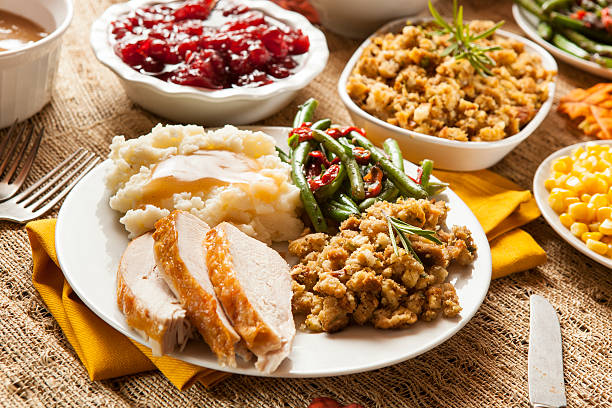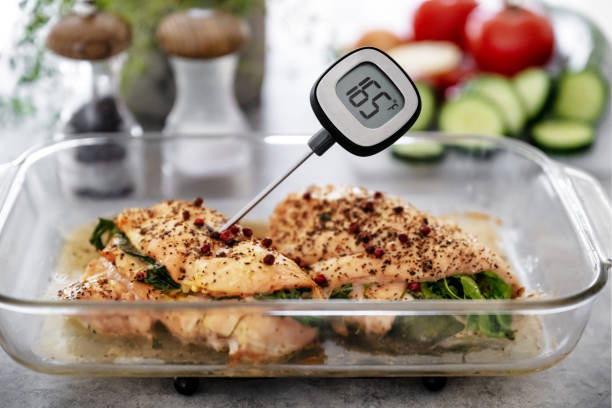Enjoy Your Thanksgiving Leftovers Safely
go.ncsu.edu/readext?1037903
en Español / em Português
El inglés es el idioma de control de esta página. En la medida en que haya algún conflicto entre la traducción al inglés y la traducción, el inglés prevalece.
Al hacer clic en el enlace de traducción se activa un servicio de traducción gratuito para convertir la página al español. Al igual que con cualquier traducción por Internet, la conversión no es sensible al contexto y puede que no traduzca el texto en su significado original. NC State Extension no garantiza la exactitud del texto traducido. Por favor, tenga en cuenta que algunas aplicaciones y/o servicios pueden no funcionar como se espera cuando se traducen.
Português
Inglês é o idioma de controle desta página. Na medida que haja algum conflito entre o texto original em Inglês e a tradução, o Inglês prevalece.
Ao clicar no link de tradução, um serviço gratuito de tradução será ativado para converter a página para o Português. Como em qualquer tradução pela internet, a conversão não é sensivel ao contexto e pode não ocorrer a tradução para o significado orginal. O serviço de Extensão da Carolina do Norte (NC State Extension) não garante a exatidão do texto traduzido. Por favor, observe que algumas funções ou serviços podem não funcionar como esperado após a tradução.
English
English is the controlling language of this page. To the extent there is any conflict between the English text and the translation, English controls.
Clicking on the translation link activates a free translation service to convert the page to Spanish. As with any Internet translation, the conversion is not context-sensitive and may not translate the text to its original meaning. NC State Extension does not guarantee the accuracy of the translated text. Please note that some applications and/or services may not function as expected when translated.
Collapse ▲With Thanksgiving festivities just around the corner, most of us will be left with a bounty of leftovers just waiting to be enjoyed again. But before you dig in, food safety experts from North Carolina State University’s Safe Plates program have a few tips to ensure you’re storing, reheating, and enjoying your leftovers safely. Proper handling and storage can prevent food borne illnesses, making sure you and your loved ones stay healthy all weekend long.
Safe Handling and Storage
- The Two-Hour Rule: After a big meal, it’s tempting to relax and let the food sit on the table. But according to Safe Plates, perishable items should be refrigerated within two hours to prevent bacteria from growing. The clock starts ticking the moment food is set out, so make sure you wrap up leftovers quickly. If temperatures are above 90°F, as in a warm kitchen or during outdoor gatherings, aim for one hour.
- Store in Small Containers: Portion your leftovers into shallow, airtight containers. Smaller containers allow leftovers to cool more quickly, reducing the risk of bacteria growth. For best results, label each container with the date to keep track of how long each item has been stored.
- Refrigerate and Freeze Properly: Leftovers should be stored in the refrigerator for up to four days or frozen for two to six months, depending on the food. Make sure your refrigerator is set to 40°F (4°C) or lower, while the freezer should be at 0°F (-18°C).
Safe Reheating
- Reheat to the Right Temperature: Safe Plates advises reheating leftovers to an internal temperature of at least 165°F (74°C). Use a food thermometer to ensure food reaches this temperature, as it will effectively kill any bacteria that may have developed during storage.
- Avoid Partial Reheating: When using a microwave, stir food halfway through to ensure even heating, as microwaves often leave cold spots where bacteria can survive. Cover dishes with a microwave-safe lid to help food reheat evenly and to trap moisture.
- Limit Reheating Cycles: Only reheat leftovers once. Repeated reheating can degrade food quality and increase the risk of foodborne illness. If there are still leftovers after reheating, it’s safest to discard them.
Foods to Watch Out For
Not all leftovers are created equal. Some items are more prone to bacterial growth than others, and NCSU Safe Plates recommends extra caution with:
- Gravies and Sauces: These should be brought to a rolling boil when reheated. Their higher moisture content makes them a potential hotspot for bacterial growth.
- Stuffing and Casseroles: Since these contain mixed ingredients, they need to be reheated carefully. Ensure they reach 165°F throughout before eating
Thanksgiving Food Safety Quick Guide
Do’s:
- Refrigerate leftovers within two hours.
- Use shallow containers for faster cooling.
- Reheat to 165°F and check with a thermometer.
Don’ts:
- Leave leftovers out overnight.
- Reheat food multiple times.
- Eat leftovers past four days if refrigerated.
Thanksgiving leftovers are often just as delicious as the original feast. By following these simple food safety guidelines from NC State’s Safe Plates, you can safely savor every bite and make your Thanksgiving last a little longer.






